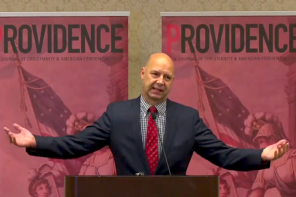Social media has made possible a new global distribution of cognitive ephemera. We are tweeting 6,000 times per second—and most of it is garbage.
And while social media has facilitated powerful forms of speech that might otherwise be stifled, it favors short snippets and the rebroadcasting of other voices, which isn’t ideal for public discourse. It is also a capitalist project, not a democratic one.
Social media will continue to shape the way that citizens speak to one another, but it is hard to be optimistic about what that will look like. In the United States, social media has morphed to fit with our politicized culture wars— we winnow our feeds down to those who agree with us, or an algorithm does that for us. Social media might aid revolutions, but it is just as likely to facilitate pack mentalities, public shaming, and bullying at a distance.
Can we design social media outlets that avoid these problems, or at least remind ourselves of the power and importance of citizen speech?
I was skeptical until this weekend, when two websites made very different public offerings. One, facing the past, will transcribe your tweets onto clay tablets. The other is the Guggenheim’s first online exhibition—a marketplace for betting on humanity’s future.
From Tweets to Tablets
Dumb Cuneiform, which launched on November 6th, offers something simple: “You send us your most ephemeral and worthless communications, and we’ll carefully transcribe them into the most long-lasting medium known to man – a clay tablet.”
Send them a text or tweet, and they promise to phonetically translate it into Old Persian, stamp it into a clay tablet, and send it to you in the mail. At first glance, this seems like yet another pop-up website to join the ranks of Mail A Spud and Send Your Enemies Glitter— a cute service designed to make easy profit. Yet Dumb Cuneiform seems somehow different. The profit margins can’t be high on hand-stamped cuneiform tablets (they sell, shipped, for $20— only twice the cost of a mailed potato).
Dumb Cuneiform is also making a sly bit of commentary about online speech. It juxtaposes tweets, which are effortless to write, with a labor-intensive writing practice that was used for thousands of years. With examples like, “I know when that hotline bling that can only mean one thing,” the joke of the service is to inscribe permanently the “dumb” ephemera of social media.
Dumb Cuneiform is, of course, just a fun online experiment. Although it won’t alter the way that we tweet, it does prompt us to reflect on the historical significance of this new form of communication.
Futures of Futures
On Saturday, November 7th, the Guggenheim held a summit to discuss its Åzone Futures Market. The online exhibition, which went live quietly in October, is an eerie online marketplace where users invest and trade in actual futures. Not stock futures, mind you: this is a marketplace for betting on the future of the human race.
The Guggenheim conceives of Åzone as a place where museum visitors can—from anywhere in the world—discuss, evaluate, and predict the effects of technology-driven change. It is built to emulate a financial market. When users sign up (for free), they receive credits that can be used to purchase shares of different futures.
 The Åzone marketplace features 36 “futures” with short descriptions, each trading at a different, fluctuating rate. Some futures are expensive— they have high value because users are confident that they will come to exist. Post-Human Driving and Drug Decriminalization, for example, are among the most valued futures. Less expensive futures, which users either doubt or perhaps feel morally opposed to backing, include Promiscuous Citizenship and Legislated Luddism, where mass automation is outlawed after humans discover labor to be ultimately valuable. The futures are themselves fascinating, and feature descriptions that would fit in any great work of science fiction.
The Åzone marketplace features 36 “futures” with short descriptions, each trading at a different, fluctuating rate. Some futures are expensive— they have high value because users are confident that they will come to exist. Post-Human Driving and Drug Decriminalization, for example, are among the most valued futures. Less expensive futures, which users either doubt or perhaps feel morally opposed to backing, include Promiscuous Citizenship and Legislated Luddism, where mass automation is outlawed after humans discover labor to be ultimately valuable. The futures are themselves fascinating, and feature descriptions that would fit in any great work of science fiction.
I have spent the last 48 hours as an active investor in the Åzone market, and here’s what I’ve discovered: under the auspices of a marketplace, the Guggenheim has created a social network where users share the news of today in order to estimate the shape of tomorrow. Central to Åzone is the role of “Hot Tips”— news articles that must be shared or cited with any trade. This turns users into invested news readers. When I read of a scientific discovery about drought resistant plants, I shared this tip and purchased a share of Post-Scarcity Farming. If your Hot Tip is cited by others when they make a trade, you receive dividends. This incentivizes a unique form of social media participation. The goal of news-sharing in Åzone isn’t to advance an ideology du jour, it’s to glimpse at a tomorrow that isn’t quite born yet— a future in its becoming.
The technologies we use are continuously shaping our future– this is as true now in an age of iPads as it was 30,000 years ago when the very first tablet was invented to hold pictographic writing. It is easy to forget that this age of social media and big data is still young, and that we are participants in its progress. In this regard, we are the ultimate inside traders, betting on futures that we get to make.





